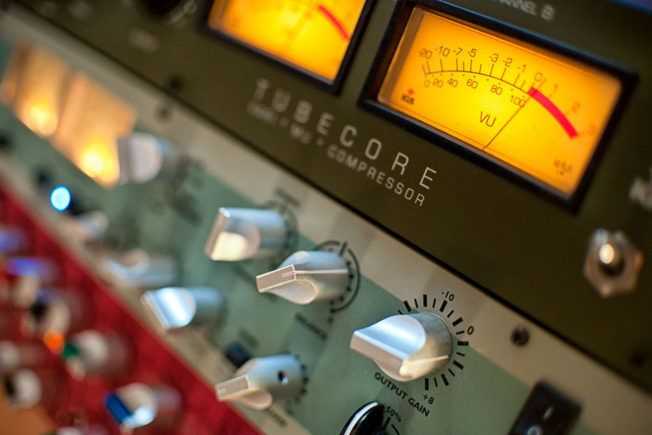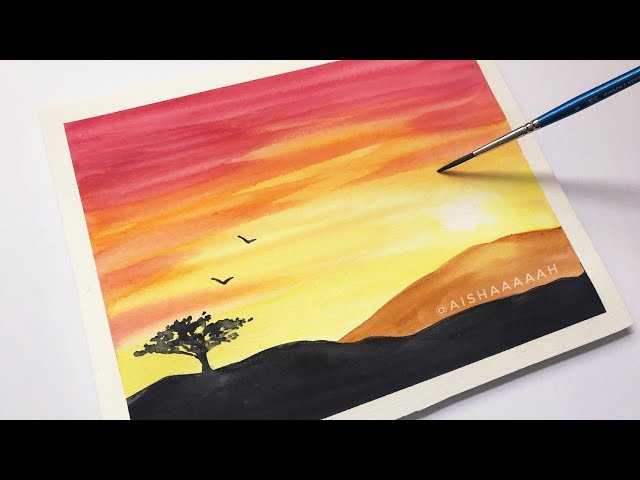Table of Contents
- Exploring the Elegance of Watercolor Flower Techniques
- Choosing the Right Materials for Stunning Floral Watercolors
- Mastering Color Blending and Texture in Flower Paintings
- Creating Depth and Dimension in Your Floral Compositions
- Q&A
- Closing Remarks
Exploring the Elegance of Watercolor Flower Techniques
Watercolor techniques offer an enchanting way to capture the delicate beauty of flowers. With their soft hues and fluid movements, watercolor paints can produce stunning effects that mimic the natural world. One foundational technique is washing, where colors merge seamlessly on the paper. By wetting the paper before applying the paint, artists achieve a gentle gradient that evokes the ephemeral beauty of blossoms swaying in a summer breeze.
Another remarkable technique is the use of glazing. This involves layering transparent washes of color over dried paint, creating depth and luminosity. Artists often start with light tones, gradually building up darker shades. This method not only enhances the vibrancy of the flowers but also allows for intricate details, like fine veins in petals or the subtle transitions of color found in nature.
- Dry Brush Technique: Ideal for adding texture, this technique employs a bristly brush with minimal paint to create sharp, striking lines that resemble the rugged surfaces of flower petals.
- Salt Texture: Sprinkling salt onto wet paint can produce beautiful, speckled effects that mimic the randomness found in nature.
- Spattering: A fun way to create a sense of motion, using a brush to flick paint onto the paper can represent the organic feel of falling petals or a lively garden.
To truly master these techniques, practice is essential. Consider creating a dedicated sketchbook for experimenting with various methods. Take note of the colors that resonate with you and the combinations that bring your floral compositions to life. An organized approach can enhance your skills over time, turning what begins as experimental strokes into sophisticated watercolor flower masterpieces.


Choosing the Right Materials for Stunning Floral Watercolors
When it comes to floral watercolors, the selection of materials can dramatically influence the final outcome of your artwork. To begin with, choosing the right type of watercolor paper is crucial. Watercolor papers come in various weights and textures, typically categorized as hot-press (smooth), cold-press (noted for its texture), and rough. Each type offers distinct benefits:
- Hot-Press: Ideal for fine details and smooth washes.
- Cold-Press: Provides a texture that enhances the richness of the colors.
- Rough: Best for dramatic effects and texture, capturing the essence of wildflowers.
Next, the choice of watercolor paints is vital for achieving vibrant results. Artists typically opt between tube and pan forms, with each offering unique advantages. Tubes allow for more vibrant and creamy applications, while pans are portable and easy to use. Consider using artist-grade paints, which contain higher pigment concentrations for richer color intensity. When selecting colors for floral compositions, consider opting for a limited palette that includes:
- Bright primary colors for vivid blooms.
- Earthy greens for foliage.
- Soft pastels for subtle flower variations.
Don’t overlook the importance of brush selection in your watercolor technique. Different brushes can create a range of effects, from delicate petals to bold strokes. Common brush types for floral painting include:
| Brush Type | Use |
|---|---|
| Round Brush | Versatile for detailed work and washes. |
| Flat Brush | Perfect for broad strokes and backgrounds. |
| Fan Brush | Ideal for creating textures and foliage. |
Lastly, consider using various accessories to enhance your floral watercolors. Items such as sponges, palette knives, and even salt can add interesting textures and effects to your paintings. Playing with these materials can help you discover your unique style while elevating your floral compositions. Ultimately, experimenting with different combinations will bring you closer to achieving the stunning visual impact you desire.


Mastering Color Blending and Texture in Flower Paintings
To achieve stunning results in watercolor flower paintings, mastering the intricacies of color blending is essential. Begin by selecting a harmonious color palette that reflects the natural beauty of flowers. Consider using colors that complement each other, and don’t shy away from mixing hues directly on your palette. This creates depth and allows the individual shades to interact, leading to a more realistic representation of petals. Using a wet-on-wet technique can enhance this effect, as the pigments spread beautifully, merging seamlessly to create soft transitions.
Texture plays a vital role in conveying the organic nature of flowers. Incorporate the use of varied brush techniques to evoke different textures. For instance:
- Using a flat brush can help capture the broad strokes of flower petals.
- A round brush is excellent for detailing the intricate centers of blossoms.
- Dry brushing can create a textured effect that mimics the delicate surface of petals.
It is also beneficial to explore the contrast between light and shadow in your works. By applying darker shades thoughtfully, you can enhance the perception of three-dimensionality in your painting. Experiment with layering techniques, allowing each wash to dry before adding the next. This method not only reinforces texture but also contributes to the richness of color, making your floral compositions pop.
Consider creating a simple reference table to guide your color mixing process, helping you keep track of combinations that yield desirable outcomes:
| Flower Color | Base Color | Blend With |
|---|---|---|
| Rose Pink | Cadmium Red | White for softness |
| Sunflower Yellow | Hansa Yellow | Burnt Sienna for depth |
| Lavender | Cobalt Blue | Permanent Rose for warmth |
By focusing on color blending and textural techniques, artists can elevate their watercolor flower paintings. Embrace the process of experimentation, as every brushstroke contributes to a richer artistic journey. Through practice, you’ll discover unique combinations and methods that will make your work truly stand out.
Q&A
Q&A About Watercolor Paintings of Flowers
Q1: What makes watercolor a great medium for painting flowers? A: Watercolor is an excellent medium for painting flowers because of its fluidity and transparency. The ability to layer washes allows artists to create vibrant blooms with delicate color transitions that mimic the natural beauty of petals. The spontaneity of watercolor can also capture the essence and movement of flowers, giving a lively feel to the artwork.Q2: What techniques should beginners consider when painting floral watercolors? A: Beginners should start with a few essential techniques, including wet-on-wet and wet-on-dry methods. Wet-on-wet involves applying wet paint onto a wet surface, which creates soft edges—perfect for petal gradients. Wet-on-dry, on the other hand, provides sharper lines for details like stem and leaf textures. Additional techniques such as glazing and splattering can also add depth and interest to floral compositions.
Q3: How can I choose the right paper for watercolor flower paintings? A: The right paper is crucial for achieving stunning watercolor effects. Look for 100% cotton watercolor paper, as it handles water well and allows for optimal pigment absorption. You’ll generally want to use cold-pressed (not rough) paper for a textured finish that can enhance the flow of colors, while hot-pressed paper provides a smooth surface, ideal for detailed work.
Q4: What are some common mistakes to avoid when painting flowers in watercolor? A: One common mistake is overworking the paint, which can lead to muddy colors. Another is not allowing layers to dry properly before adding more details. It’s also essential to pay attention to the balance of color; too much of one shade can overpower the composition. Lastly, many new artists forget to plan their compositions, leading to awkward arrangements.
Q5: How can I make my watercolor flowers more vibrant? A: To enhance vibrancy, choose quality paints and use them in their pure form. Mixing with too much water can dilute color intensity, so try to use just enough water to achieve the desired flow. Layering colors while allowing each to dry will also add depth and brightness to your final piece.
Q6: What are some popular flowers for watercolor painting, and why? A: Popular choices for watercolor painting include roses, sunflowers, and peonies. Roses are loved for their variety of shapes and rich color options. Sunflowers offer a bold appearance and convey warmth, while peonies are known for their lush, fluffy petals that create beautiful textures. Each flower allows for a unique exploration of color and form!
Q7: Can you recommend any resources for learning watercolor painting techniques focusing on flowers? A: Absolutely! Online platforms like Skillshare and Udemy offer classes specifically for watercolor floral painting. YouTube is also a treasure trove of tutorial videos that cater to all skill levels. Additionally, investing in books like “Watercolor Flowers” by Karlyn Holman can provide valuable insights and step-by-step guidance.
Q8: How can I display my watercolor flower paintings once completed? A: After your masterpiece is finished, consider framing it under glass to protect the delicate paper from moisture and dust. Using a mat can enhance the presentation. Alternatively, you might explore creating a gallery wall with multiple floral pieces, showcasing your creativity and adding a fresh touch to your living space. — Feel free to adapt these questions and answers to suit the specific angle or focus of your article!
Closing Remarks
watercolor flower paintings offer a beautiful blend of artistry and nature, inviting us to appreciate the delicate nuances of both. As we explore the vibrant hues and gentle brush strokes that bring these blossoms to life, we discover not just a technique but an expressive language that speaks to the heart. Whether you’re a seasoned artist or a curious beginner, there’s endless joy in experimenting with watercolor. So grab your brushes, let your creativity flow, and embrace the beauty of nature’s floral wonders on paper. After all, every stroke is a step into a whimsical world where colors dance and flowers bloom eternally. Happy painting!

